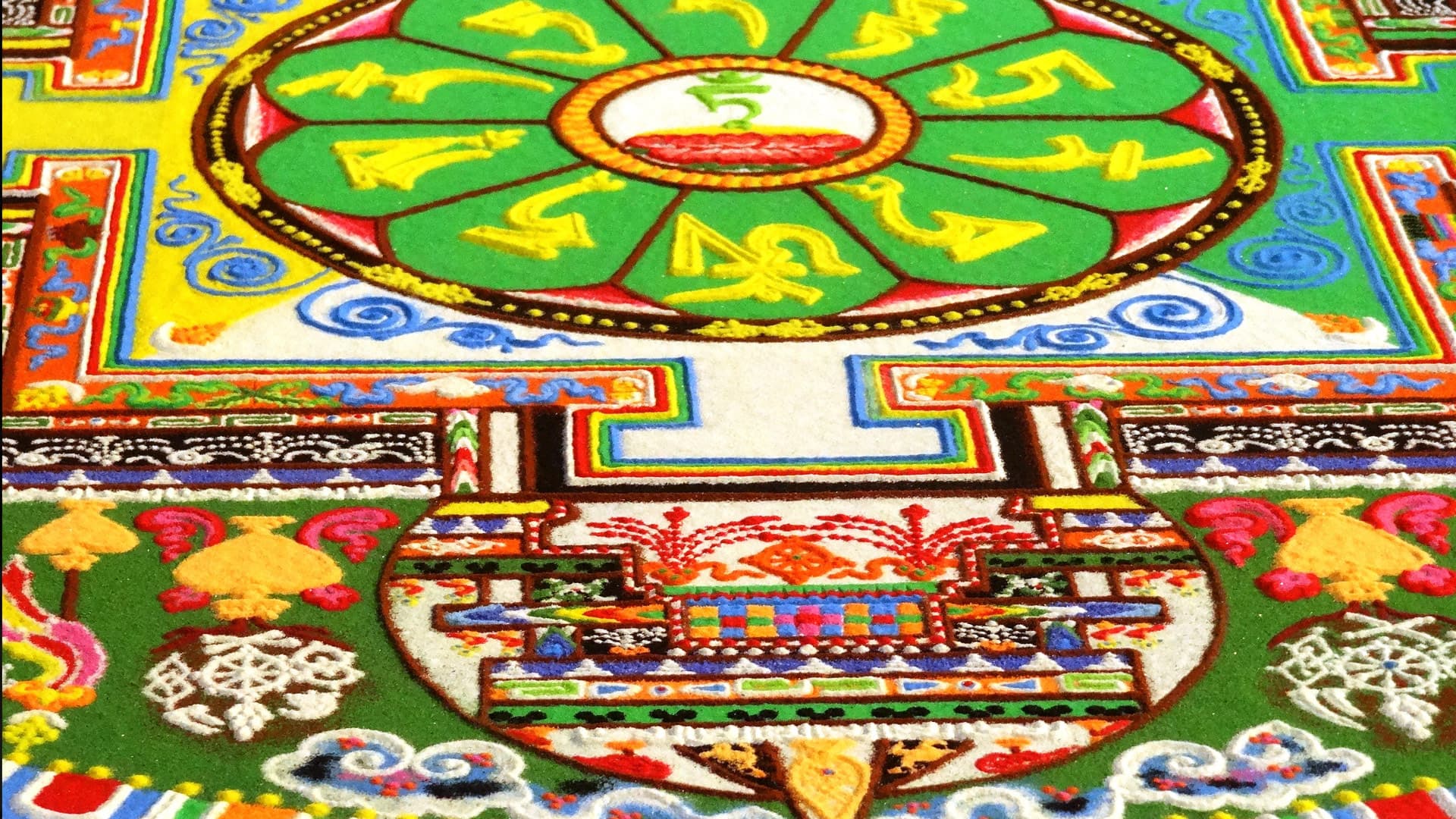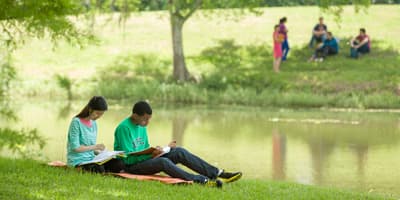Tibetan monks visit UHCL sharing Buddhist philosophy and rituals
November 27, 2017 | UHCL Staff

Five Tibetan monks from the Gaden Shartse Norling Monastery in Mundgod, India made
University of Houston-Clear Lake a stop on their tour of the U.S. to share Buddhist
philosophy and demonstrate the construction of a sacred sand mandala to students,
faculty and the community. Geshe Lobsang Wangyal,--Geshe meaning something equivalent
to “Father” in the Buddhist faith and similar to a doctorate in academic terms—spoke
through an interpreter about his journey through monastic life and his experiences
coming to the U.S. for the first time.
Wangyal, 52, said that he came from a very poor, struggling village in Tibet as one
of ten children. “I was fifteen years old when I decided to become a monk,” he said.
“In the temple in my village, I could see the monks were totally different from the
other people. They looked like they had peace in their mind, always had a happy face.
You could see they were mentally very happy, so this was my decision.”
Normally in a monastery, Wangyal explained, a young monk finds a tutor. “Your tutor
becomes responsible for you as a monk; he sends you to school, teaches you manners,
and educates you as a father would. My tutor was my uncle. My parents were very happy
that I made this decision.”
Parents in Tibetan culture who have two sons hope that one will become a monk. “It’s
a little like in Western culture, where you hope one of your children becomes a doctor,”
he said. “Parents feel that if their son is successful as a monk, he’ll be part of
the monastery, which helps people, so they are very proud.”
Wangyal said he has never regretted giving up a secular life, even from such a young
age. “As a lay person, you do not have much time to practice the teachings of Buddha
because you might have a wife and children,” he said. “Being a monk means you always
have time to practice. I dedicate my life to the benefit of others. I am happy that
I have no distractions in life; it is my choice to practice Buddhist teachings in
my own way.”
The monastic life is a good one, he said. “I have learned the rituals and studied
the philosophy, and now I am Geshe, so I am successful. I have no bad thoughts about
others at all. I have learned to practice love and compassion and to control my emotions,
like hatred or desire. And if I can’t help, then I never harm.” He added that a central
Buddhist belief is that this earthly existence is not the only life, so if he creates
good karma in this life, then he will be happier and have an even better next life.
Wangyal said that although he has traveled internationally before, he had never been
to the United States before their tour. “I have noticed the roads are very good here
and everyone follows the rules, which they do not do at all in India,” he said. “And
here, there’s always electricity. In our monastery, that is not always the case.”
They will return to their monastery in India, he said, in two years, after they complete
many more stops on their tour.
“We don’t choose this life as monks for ourselves, we want to help people,” he said.
“We want to share what we know and we hope people use it to benefit themselves.”
The monks worked several hours a day throughout their weeklong visit to UH-Clear Lake
on a sacred mandala, a spiritual, ritually constructed symbol made of sand that represents
a form of sacred architecture.
In creating the mandala, the monks invited Buddha’s purity and holiness into the environment.
“It takes patience and concentration,” Wangyal said. “You have to practice a lot to
make one. You do it many times till it’s familiar. You have to give it time to work
slowly and carefully because it’s something special. If it’s your first time, there
are books and diagrams you have to learn.”
It is an ancient practice and every detail is in the books, from the color, the symbols,
and the diagram itself. “The one we are making here is a certain deity who represents
protection from negativity and wisdom for those who want to be educated,” Wangyal
explained. “There are many different mandalas that represent all kinds of things,
like compassion, wisdom, healing—all illustrating different deities in Buddhism.”
During the hours he’s working on the mandala, Wangyal said that he is praying and
meditating. “Making a mandala is like making a blessing,” he said, which is why observers
in Western culture are usually aghast when the mandala’s imminent dissolution occurs.
“It’s part of our belief in impermanence,” he said. “Everything has its own time,
like our life. Nothing is permanent in this world, and according to its time, it has
to go. So, there’s no attachment to worldly things and when we destroy it, we dedicate
it and pray. This is also good karma, which we dedicate to all living things.”
About the Author:
Recent entries by
October 18 2022
Better technology transforms campus safety: Police Chief demonstrates SafeZone to students
October 14 2022
Student's skill with drones takes chicken turtle research to new heights
October 11 2022
Planting event to help UHCL restore native plants to campus, support environmental sustainability







